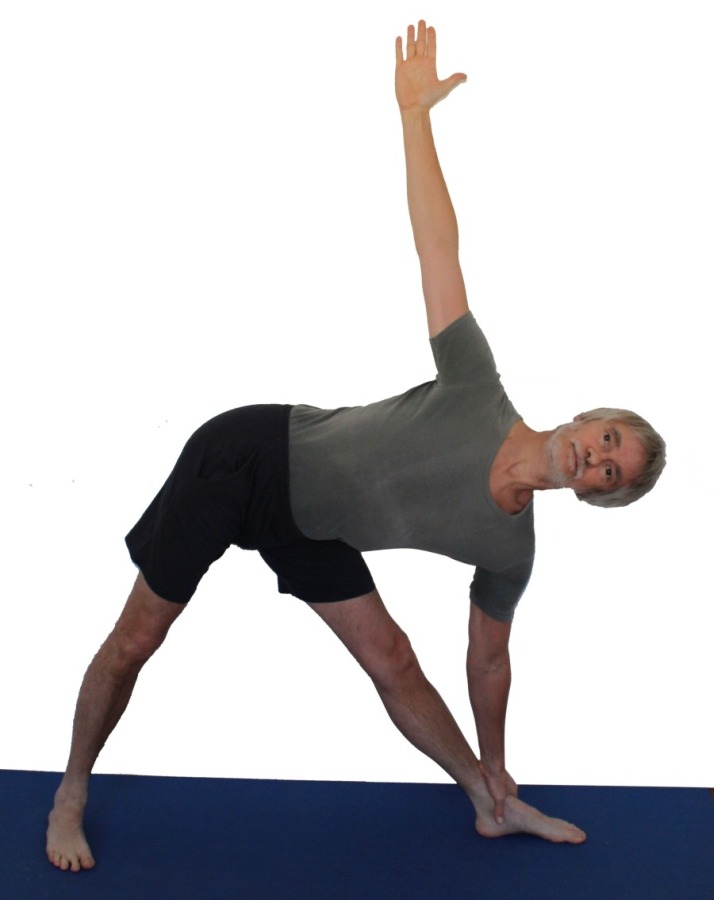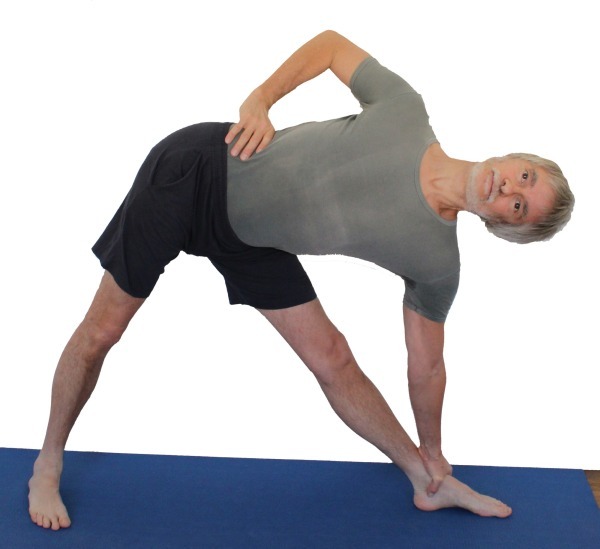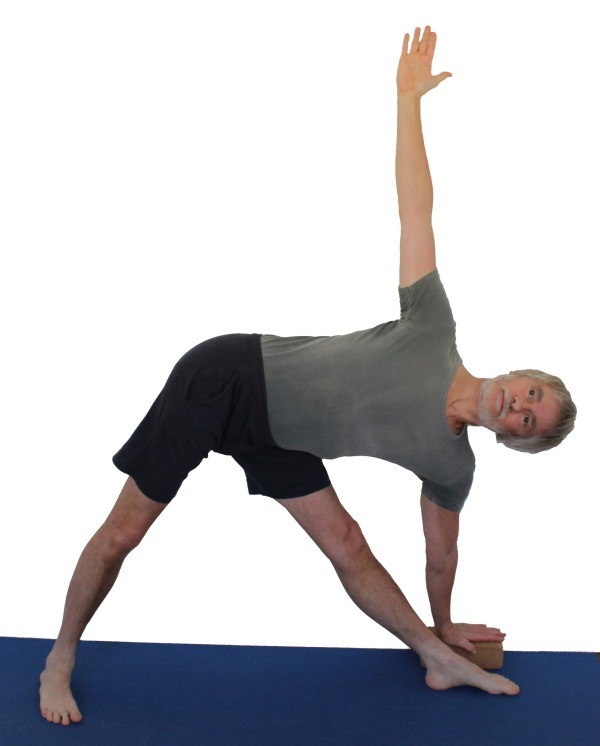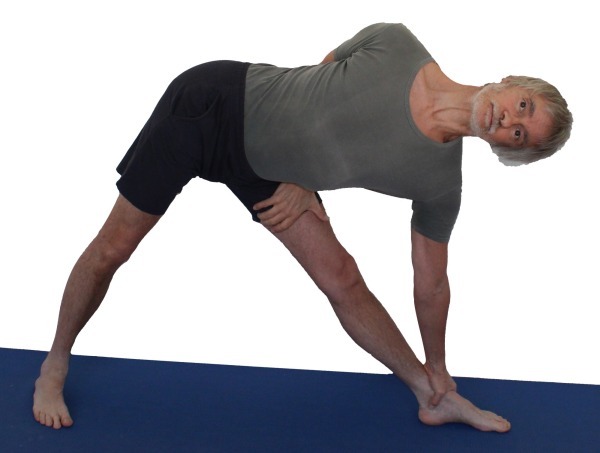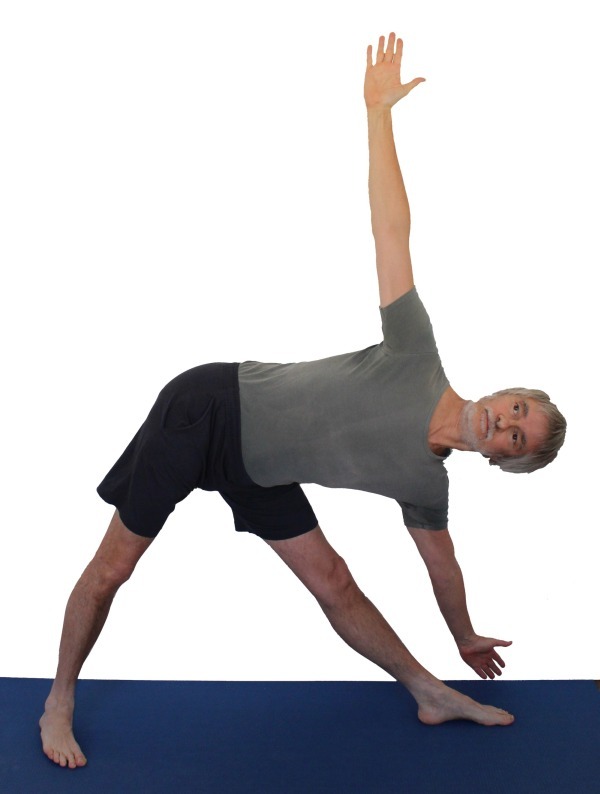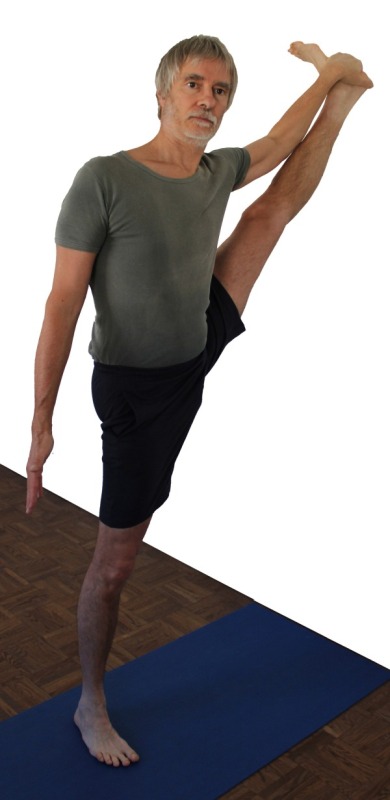|
diagnostic hints (Nos.): |
(880) overstretching the knees: Overstretching the knee is the ability to reach or the current state of an angle
of more than 180° in the knee joint. To a certain extent, this is considered normal
for the anatoms and is on average more widespread and pronounced in the female sex.
However, it can also indicate a weakness of the quadriceps. Furthermore,
unphysiological sensations often occur in overstretching, which do not originate
from stretching or exertion of the musculature and should be avoided,
see also FAQ.
(721) (724) ischiocrural group: In forward bending movements (flexion in one or both hips), but also under load in
the muscles of the back of the leg, various disorders can be detected:
- Shortening of the ischiocrural muscles, see FAQ
- Damage to the ischiocrural musculature, which causes pain or functional limitations,
can also be found well easily, from simple tension and strain to ruptures.
Damages would lead to a reduction in strength when leaving the
pose quickly
- Irritations of the n. ischiadicus: especially in forward bends, irritations
of the n. ischiadicus, which innervates the leg and foot can become
symptomatic, even if they are otherwise rather quiet.
See also the FAQ
- Irritations of the ischiocrural group's origin at the sitting bone
(tuber ischiadicum) will clearly become apparent in this pose and
need to be protected from intensive stretching, as this pose induces.
- Baker cysts create a feeling of tension or foreign body, see FAQ
(293) Excessive tension in the trapezius : if the trapezius has a tendency to cramp despite stretching the upper arm clearly
towards the ceiling, this indicates an excessive tonus. It is probably one of
the most tense muscles of Western civilization. attitude and posture including today's
widespread work at computer workstations, make a significant contribution to this.
(217) neck:
Holding the head means working for the cervical muscles, endurance deficiencies
and hypertension can be detected in this pose, e. g. by a tendency to cramp.
(511) Pectoralis:
A shortened pectoralis may lead to a reduced ability to stretch the arms sideways
away from the body. It also limits retroversion in a lateral abduction of 90°.
(644) lumber spine: in this pose, problems of the lumbar spine or its musculature may become apparent, see also the FAQ(751) adductors: in this pose, the adductors are stretched. This makes it possible to detect damage caused by it: - muscular shortenings
- irritating states of the tendons of the origins and insertions,
which can be felt as an elongated dragging pain extended along the course of the tendons.
- tensions that cause a tormenting sensation in the musculature that goes far beyond normal stretching.
- partial or complete ruptures of adductors which, in the event of a complete rupture will impress with a loud noise, followed by haematoma and maybe swelling.
- lateral differences in flexibility that can cause pelvic obliquity and consecutive scoliosis
(721) (724) ischiocrural group: Various disorders can be found in the extensive flexion in one hip and under
a certain load in the muscles of the back of the leg:
- shortening of the ischiocrural muscles, see FAQ
- Damage to the ischiocrural muscles, which causes pain or functional limitations,
can also be found here easily, from simple tension and strain to muscle tearing.
Ruptures would lead to a reduction in strength when leaving the pose quickly.
- Irritations of the n. ischiadicus: especially in forward bends,
irritations of the n. ischiadicus, which innervates the leg and foot
can become symptomatic, even if they are otherwise rather quiet.
See also the FAQ
- Irritations of the ischiocrural group's origin at the sitting bone
(tuber ischiadicum) will clearly become apparent in this pose and need
to be protected from intensive stretching, as this pose incudes.
- Baker cysts create a feeling of tension or foreign body,
see FAQ
(886) knee: This pose reveals knee problems associated with far stretched position under load.
For example, traumatic or degenerative damage to the meniscus, arthrosis, arthritis,
subluxations, ligament damage, plica syndromes and others,
see the FAQ(880) overstretching the knee: overstretching the knee is the ability to reach or the current state of an angle
of more than 180° in the knee joint. To a certain extent, this is considered
normal by the anatoms and is on average more widespread and pronounced in
the female sex. However, it can also indicate a weakness of the quadriceps.
Furthermore, unphysiological sensations often occur in overstretching,
which do not originate from stretching or exertion of the muscles and should be avoided,
see also FAQ |
